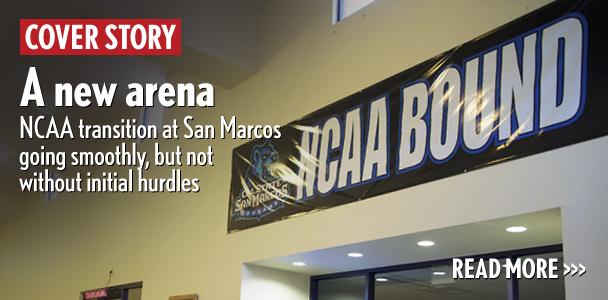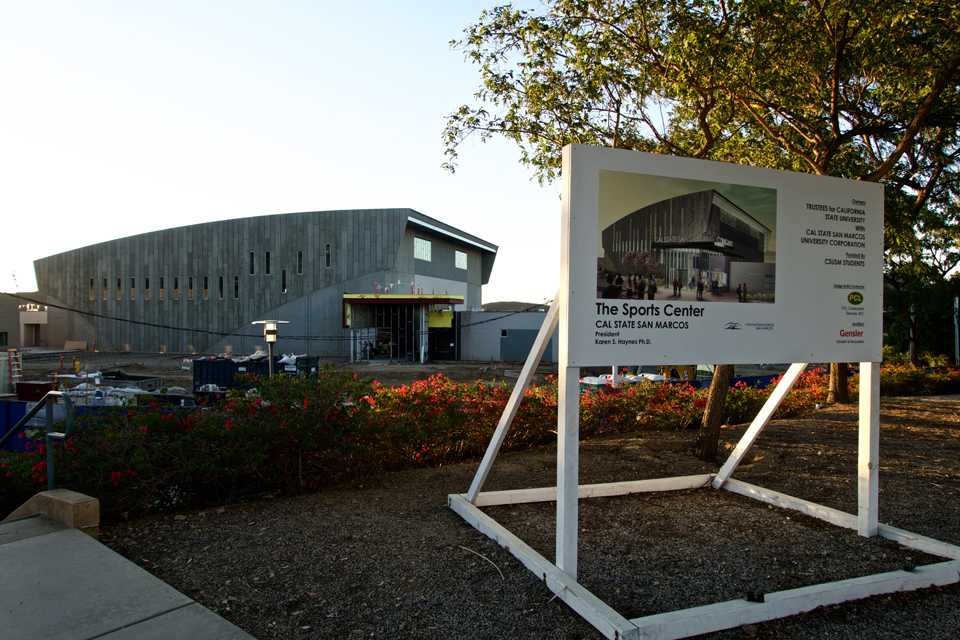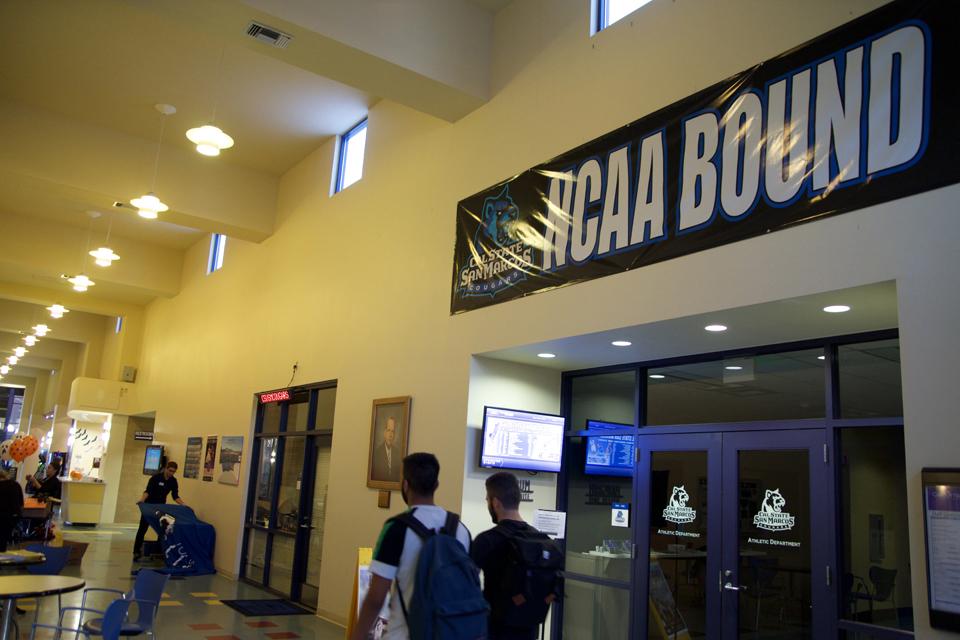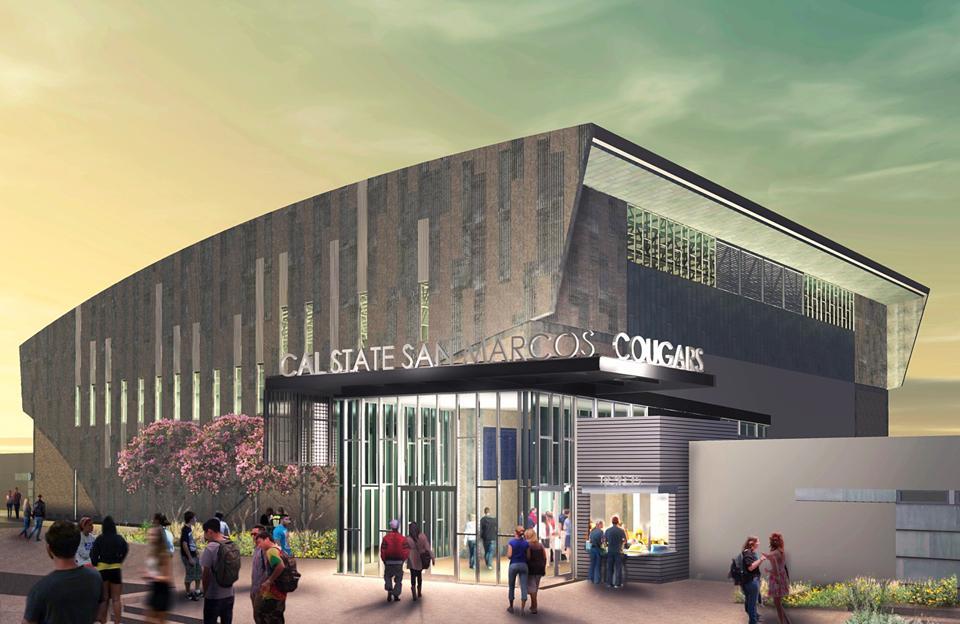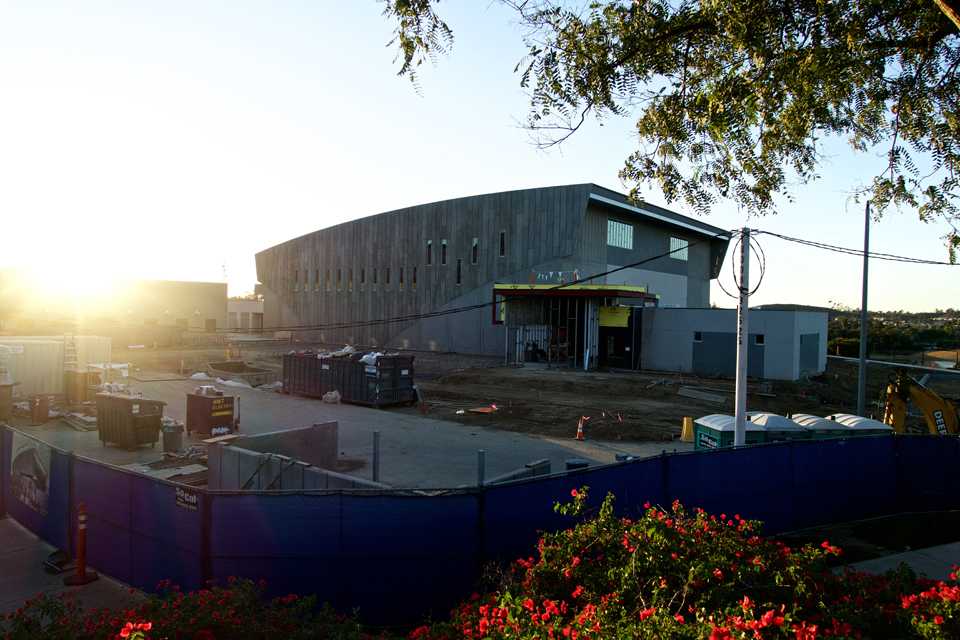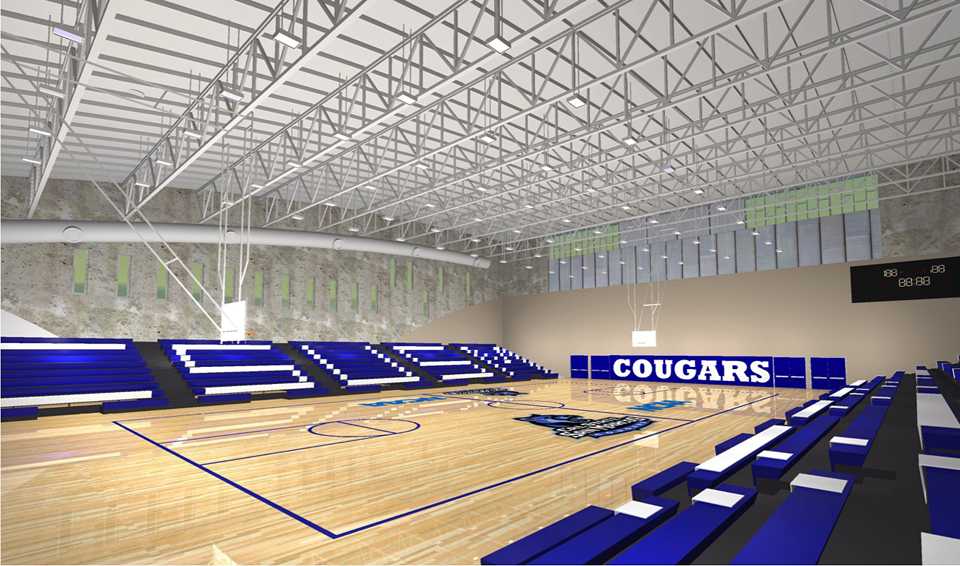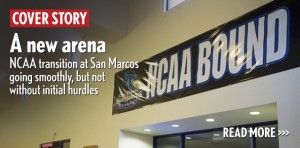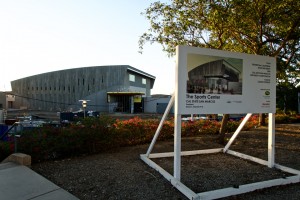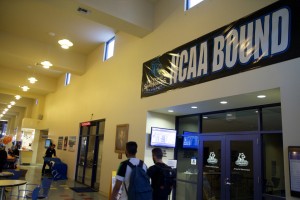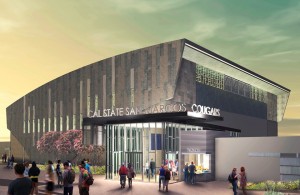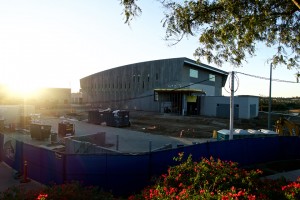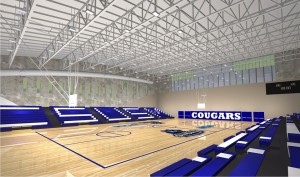A new arena: NCAA transition at San Marcos going smoothly, but not without initial hurdles
November 7, 2015
On a hot, sunny day, a breeze whips up a large cloud of dust in a construction lot on the campus of Cal State San Marcos.
The curved, grey, unfinished building sits on the lot. It only stands out because there’s a lot of construction going on in the area. Otherwise, the grey blob with some white trim does nothing aesthetically to differentiate itself from the bland buildings of CSUSM’s campus just across the street.
But the 25,000-square-foot building, named the Sports Center, is the face of a big transition for the university’s athletics from the National Association of Intercollegiate Athletics (NAIA) to NCAA Division II, a three-year process that’s currently in its second year.
“The impact has been huge not only for our department, but for the entire campus,” athletics director Jennifer Milo said. “Everybody knows that little blue disk that has the NCAA logo on it. Nobody knew what the NAIA was.”
One of the key elements of the transition is annual meetings between athletics department brass and NCAA membership committee representatives and consultants.
“The biggest thing they want to see is progress,” Milo said. “In addition to the membership committee, we also are working with a consultant who visits our campus twice a semester to make sure we’re meeting what we need to, as well.”
Certain benchmarks must be met during the three-year process, including proficiency of the large NCAA rulebook, adequate support staff and an increased but balanced budget.
Another necessity of the transition is facilities. Currently, the CSUSM men’s and women’s basketball teams play at the MiraCosta College gymnasium, which is nearly 11 miles to the west in Oceanside off state Route 78.
Enter, the Sports Center. Not to be confused with the ESPN TV program of the same name, the $11.4 million facility will serve as the future home of the basketball and volleyball teams.
The building’s construction is on schedule and set for its grand opening in August 2016.
Half of the $11.4 million price tag came from a reserve the university had. Another large portion came from student fees. Only a very small percentage came from private donations, which is a product of CSUSM being established in 1989 and handing out its first degrees in 1991.
“Our donor base is still relatively young and haven’t hit their stride yet in making the kind of money they need to make to give a sizable contribution,” Milo said.
The Sports Center will have a capacity of 1,400 people for athletic events and 2,200 for non-athletic events. It was designed by Gensler, an international architecture firm that has its pencil marks on airports and sharp office buildings across the globe.
CSUSM gave the Sports Center its generic name because the athletics department wants to put a donor’s name on the building, eventually.
Milo says the department has made some progress in trying to find someone to pay $5 million for the name.
“The visibility of this building — right off the freeway — is huge,” Milo said. “A $5 million asking price to put your name on a building in perpetuity is a relatively good deal.”
Among the many changes the department is undergoing in the transition — increased budget, increased fundraising efforts and hiring of more support staff just, to name a few — include playing in the California Collegiate Athletic Association, which is comprised of mostly California State University schools and UC San Diego.
Being in a conference takes away a major inconvenience for all of the Cougars’ athletic teams.
“We were able to get plenty of games early on in the season, but once teams began conference games, they get into their routine and adding a third game in their week is a very big challenge,” men’s soccer coach Ron Pulvers said.
But perhaps the biggest challenge going forward for CSUSM is compliance. The NAIA rulebook compares to the NCAA rule book like how a children’s book stacks up next to a “Lord of the Rings” book.
Something that might not be a violation in NAIA might be a violation in the NCAA. Pulvers encountered one such difference firsthand when his men’s soccer team traveled to UC San Diego in mid-October.
“You’re allowed 22 traveling players to be on the bench (in Division II). I had five injured players who had to sit in the stands because there were too many players,” Pulvers said.
Those five players under old NAIA rules would’ve been allowed to at least sit on the bench in the game. Other notable rule changes deal with meal allowance and what things can and can’t be offered to student athletes.
Because there are more rules, coaches have to go through extra training and education so they better understand them.
Since the start of CSUSM’s transition to D-II, several compliance staff members have been hired to assist administration, coaches and donors in becoming familiar with the NCAA bylaws. Typically, the compliance staff knows the rulebook inside and out.
While the NCAA is commonly referred to as a byzantine organization that seeks to punish even the slightest toe out of line, Pulvers said the rules are mostly “common sense.”
“There’s so much more accountability in the NCAA,” Pulvers said. “It’s very clear, it’s black-and-white, you get a yes or no answer on the compliance end.”
A small downside to the reclassification is postseason ineligibility. For this season and the next, the Cougars are ineligible for postseason play, a reality that at larger Division I schools usually hurts recruiting because high-level recruits typically pursue fame and championships.
Not in San Marcos, however. Division II schools rarely receive any national attention in athletics. That’s why education is the primary focus and athletics is secondary theater.
“The things that this campus has to sell really outweigh the postseason challenge,” Milo said. “We want to recruit student athletes to compete for national championships, but that’s not the end-all, be-all.”
“We try to minimize the importance of playing in the postseason and winning as a tangible reward,” Pulvers said.
For the Cougars’ men’s basketball team, though, the postseason ban comes at an unfavorable point in time. The team went 30-4 in the 2014-15 season, and 32-2 in the 2013-14 campaign.
Both years ended in trips to the NAIA quarterfinals, currently the farthest in the postseason CSUSM has ever gone.
But the process of switching to Division II is far from done. More meetings are scheduled with the NCAA membership committee, construction work on the building continues, and CSUSM basketball once again gears up for its final season in the MiraCosta College gym.
Patrick Carr is a San Diego freelance writer




